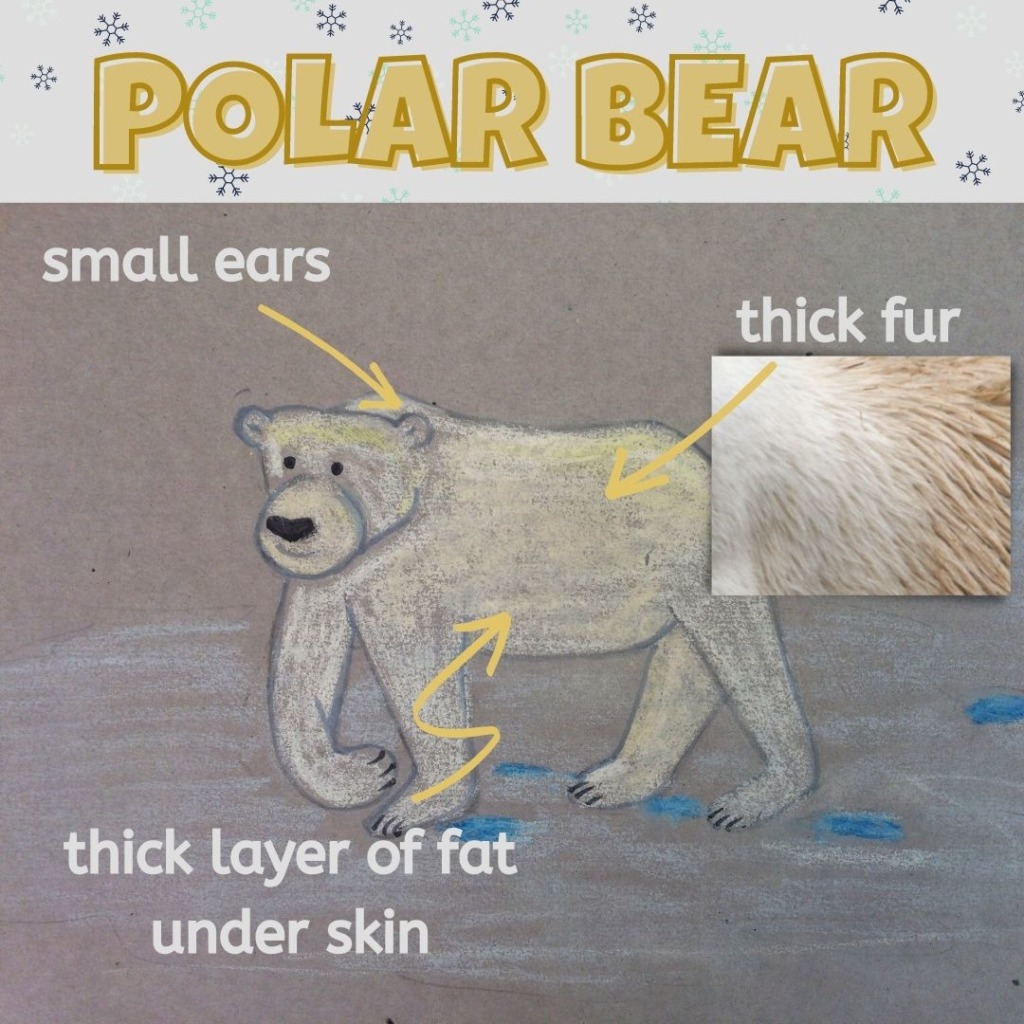Have you heard the word adaptation before?
Each animal has body parts that help it survive in its unique environment. (This is true for plants too!) We sometimes call these body parts adaptations. An animal can have body parts that help it stay warm or cool. An animal can have body parts that help it find or catch food. Some body parts do both of these things!
This is a fennec fox:

The fennec fox is a small animal that lives in the deserts of North Africa. It eats insects, lizards, eggs, and some plant parts. The fennec fox has large ears that help it listen for prey under the sand. These ears also act as air-conditioners! The large ears radiate heat and help the fennec fox stay cool.
This is a polar bear:

It looks a little different than the fennec fox, right? Polar bears are large carnivores that live in the Arctic, which is the region around the North Pole. Polar bears feed mainly on seals. Polar bears need sea ice to travel and reach their prey.
Polar bears are comfortable in cold temperatures. On a very cold day the temperature in the Arctic can drop to a frigid -45 ºC (-49 ºF). A hot day for a polar bear is about 10 ºC (50ºF). That’s still pretty chilly for us humans. Our idea of a nice, comfortable day is around 21 ºC (70 ºF).
Polar bears have many adaptations for living in an extremely cold climate. Here are three:
- Polar bears have a heavy fur coat that keeps them warm on land.
- They have a thick layer of fat that keeps them warm when they swim in frigid Arctic waters.
- They have small ears to reduce the amount of heat they lose from their bodies.

Here is your activity:
We humans don’t have body parts that are adapted to the extreme cold. But, our brains are adapted to be good at problem-solving. And our hands help us make tools, clothing, and shelters.
Challenge 1:
Imagine it is winter and you are visiting the Arctic. Brrr. It is super cold! Your task is to name or draw three ways you could keep yourself protected and survive the Arctic chill.

Challenge 2:
Now imagine you are in the Sahara Desert – home to the fennec fox – where the daytime temperature is usually around 40 °C (104 °F). Name or draw three ways that you could keep yourself cool on a scorching hot day.
Did you know?
The temperature in the Sahara Desert may be hot during the day, but at night it drops! Nights in the desert can be a chilly -4 °C (25 °F). Can you think of how an animal might stay cool during the day and also warm at night? How would you change your behavior or clothing as the hot desert day transitioned to the cool night?

Additional resources:
Read about desert biomes (Nasa Earth Observatory)





